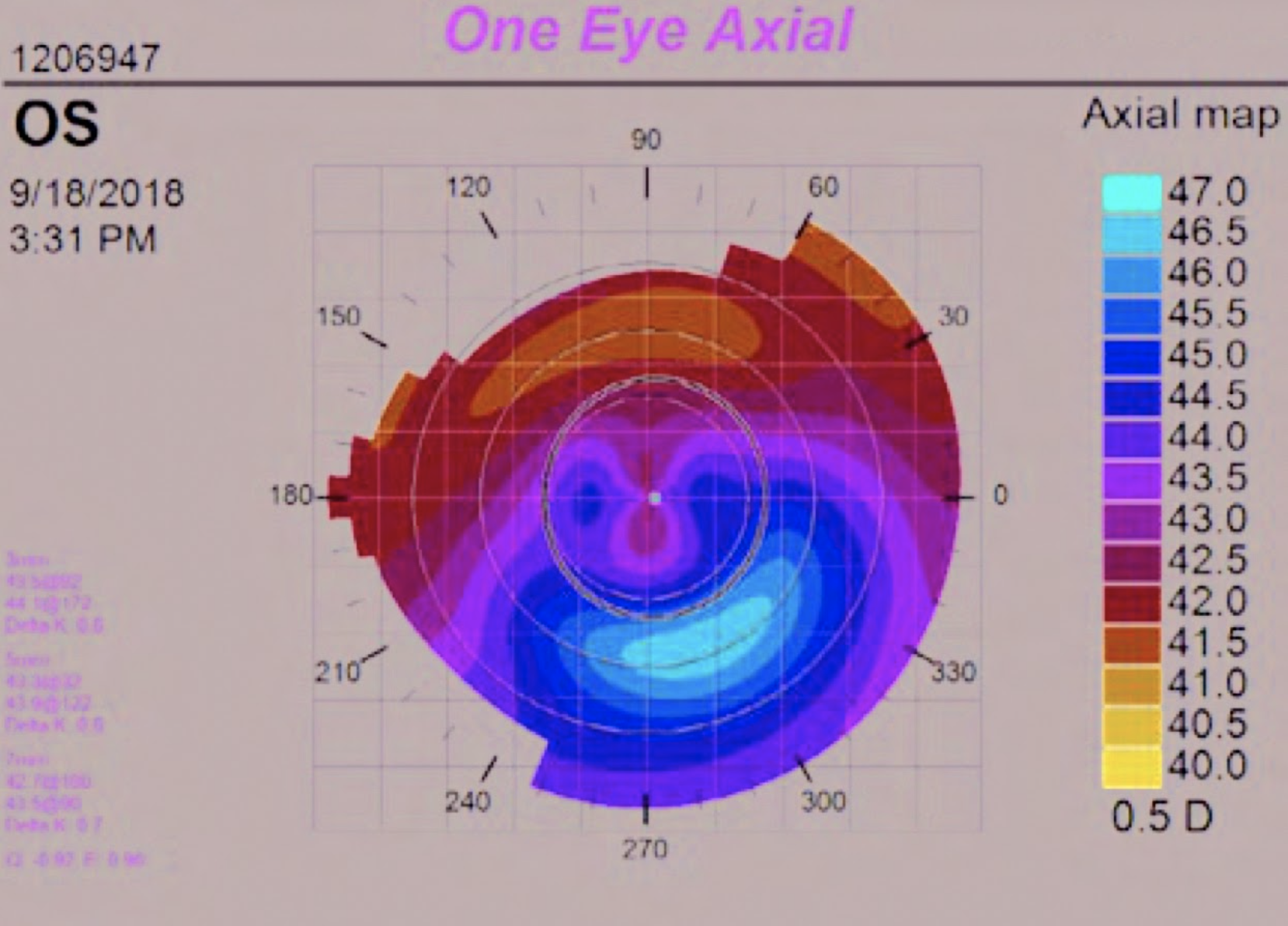 |
|
Preterm children had greater corneal ectasia, and laser treatment for ROP caused further corneal steepness and higher anterior corneal astigmatism. Photo: Oliver Kuhn-Wilken, OD, and Victoria Roan, OD. Click image to enlarge. |
A positive correlation between retinopathy of prematurity (ROP) severity and corneal steepness has been reported in preterm children, but the role of premature status or ROP pathology in the development of a steep corneal curvature remains unclear. In a recent study, researchers evaluated corneal topography in full-term and preterm children with or without ROP.
Children aged two to 12 were enrolled in four groups: full-term (77 participants), premature without ROP (178 participants), untreated premature with ROP (45 participants) and laser-treated and/or intravitreal injection of anti-VEGF-treated premature with ROP (131 participants). Corneal topography was measured with the Galilei G4 device, which uses both placido and Scheimpflug imaging, every six months and compared among the groups using generalized estimating equation models at approximately seven years of age.
The study found that premature status led to greater corneal ectasia, and laser treatment for ROP caused further corneal steepness and higher anterior corneal astigmatism.
“Compared with full-term eyes, premature eyes demonstrated steeper anterior corneal curvature, higher anterior and posterior corneal astigmatism and thinner thinnest pachymetry,” the authors concluded in their paper. “The laser-treated ROP eyes displayed steeper anterior corneal curvature and higher anterior corneal astigmatism than the intravitreal injection-treated eyes. The laser-treated preterm ROP eyes exhibited high cone location and magnitude index (1.96), reaching the cutoff for detecting keratoconus (1.82).” The authors noted that this was compatible with findings that indicated the premature status led to a greater ectatic cornea (steeper and thinner), whereas laser treatment led to further steepness.
The laser-treated eyes displayed the highest myopia among all preterm ROP eyes, which was possibly attributed to the steepest anterior corneal curvature and smaller anterior chamber depth/axial length ratio, representing a thicker or anteriorly positioned lens.
“Due to significant abnormal corneal topography, premature patients, particularly those with laser-treated ROP, may be suboptimal candidates for laser refractive surgery,” the authors wrote.
Wu PY, Chen HC, Hsueh YJ, et al. Corneal topography in preterm children aged 2 years to 12 years with or without retinopathy of prematurity. Eye. December 16, 2022. [Epub ahead of print]. |


